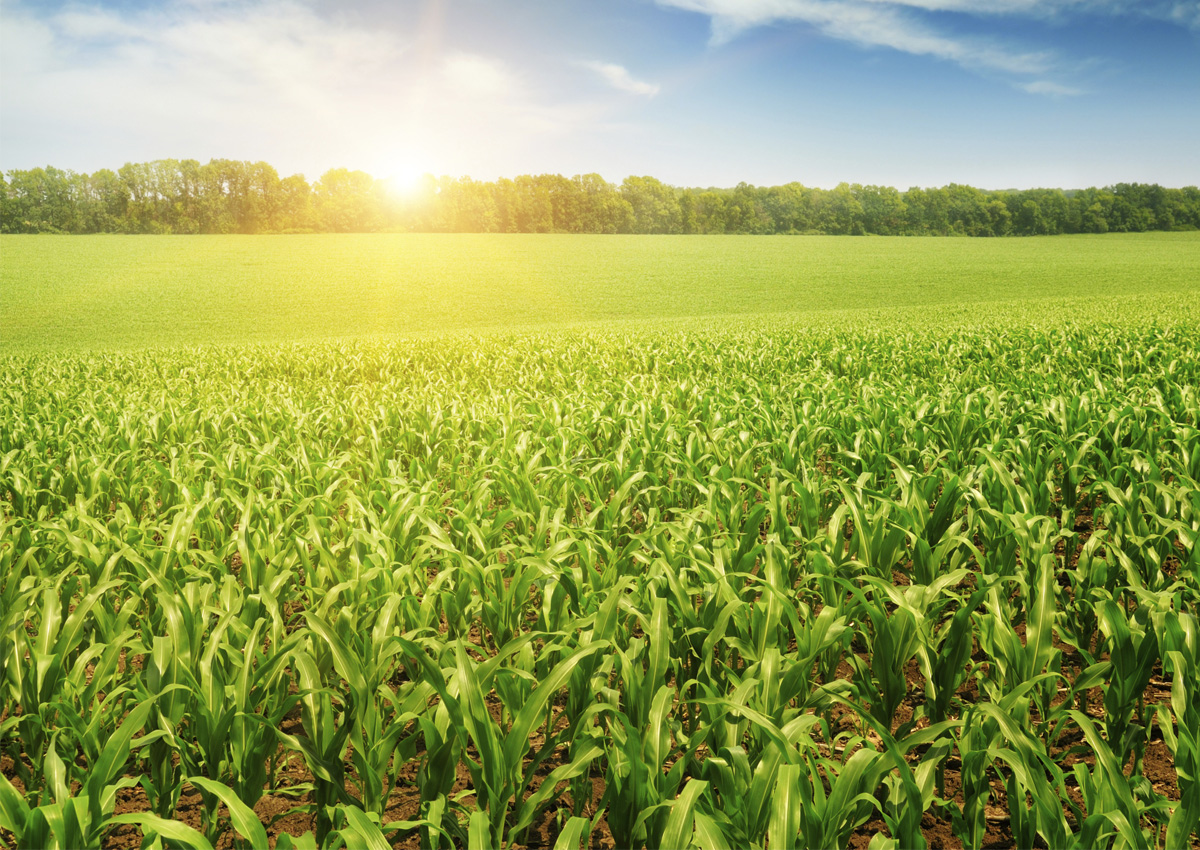
30 Years of Experiments Predict Future for Major Crops
November 11, 2020| |
During the past 30 years, a network consisting of 14 long-term research facilities from five continents has simulated future levels of carbon dioxide (CO2) to forecast its impact on crops. The 'Free-Air Concentration Enrichment' (FACE) experiments are conducted outside in real-world field conditions to capture the complex environmental factors that impact crop growth and yield.
A review published in Global Change Biology synthesizes 30 years of FACE data to grasp how global crop production may be impacted by rising CO2 levels and other factors, a less optimistic one than the authors' previous review published 15 years ago in New Phytologist. The reviews consider two groups of plants: most crops are C3 (including soybeans, cassava, and rice), which are less efficient at turning CO2 and light into energy during photosynthesis. C4 plants, such as corn and sugarcane, supercharge photosynthesis by using some of the light energy they receive to concentrate CO2 within their leaves, making them up to 60 percent more efficient.
The authors show that elevation of CO2 to levels expected for the second half of this century could increase C3 crops' yields by 18% with adequate nutrients and water. However, this does not mean bountiful harvests. According to co-author Stephen Long, Ikenberry Endowed University Chair of Crop Sciences and Plant Biology, rising CO2 is the primary cause of change in the global climate system and the anticipated 2°C rise in temperature could halve yields of major crops, wiping out any gain from CO2.
On a more positive note, the authors show that there is sufficient genetic variation within major crops to overcome some of these negative effects and capitalize on the yield benefit of higher CO2. "Where a genetic variation is lacking, there are some bioengineering solutions with one already demonstrated to prevent yield loss when the temperature is raised with CO2," Long said. "But, given the time taken to develop new crop cultivars, this potential could only be realized if we start now."
For more details, read the article on The Carl R. Woese Institute for Genomic Biology website.
| |
You might also like:
- Scientists Unravel Mystery of Photosynthesis
- Experts Unlock Key to Photosynthesis
- Rice Plants Engineered for Better Photosynthesis Make More Rice
Biotech Updates is a weekly newsletter of ISAAA, a not-for-profit organization. It is distributed for free to over 22,000 subscribers worldwide to inform them about the key developments in biosciences, especially in biotechnology. Your support will help us in our mission to feed the world with knowledge. You can help by donating as little as $10.
-
See more articles:
-
News from Around the World
- International Online Discourses Provide Global Updates on Animal Gene Editing and Biotechnology
- UN Report Pinpoints Potential Hotspots of Famine
- GM Crops to Boost Food and Nutrition Security in Ghana
- IITA and CIP Awarded Certification in Stewardship Excellence
- 30 Years of Experiments Predict Future for Major Crops
- South Australia Rejects 11 Proposals to Ban GM Crops, Says GM Moratorium's Price Premiums Only a Myth
- Australian OGTR Issues License for Commercial Release of Herbicide Tolerant Cotton
- Invitation to the 3rd Asian Short Course on Agri-biotech, Biosafety Regulation, and Communication
-
Research Highlights
- Cisgenic Potatoes Do Not Disrupt Soil Microsystems
-
Plant
- Genome Editing in Plants using CRISPR Type I-D Nuclease
- Heat Tolerance Gene in Corals Found Using Gene Editing
-
Health
- Study Identifies "Mother" of all SARS-CoV-2 Genomes; Reveals Earlier COVID-19 Timeline
- Researchers Find "Hidden Gene" in COVID-19 Virus
-
Read the latest: - Biotech Updates (April 17, 2024)
- Gene Editing Supplement (April 10, 2024)
- Gene Drive Supplement (February 22, 2023)
-
Subscribe to BU: - Share
- Tweet

